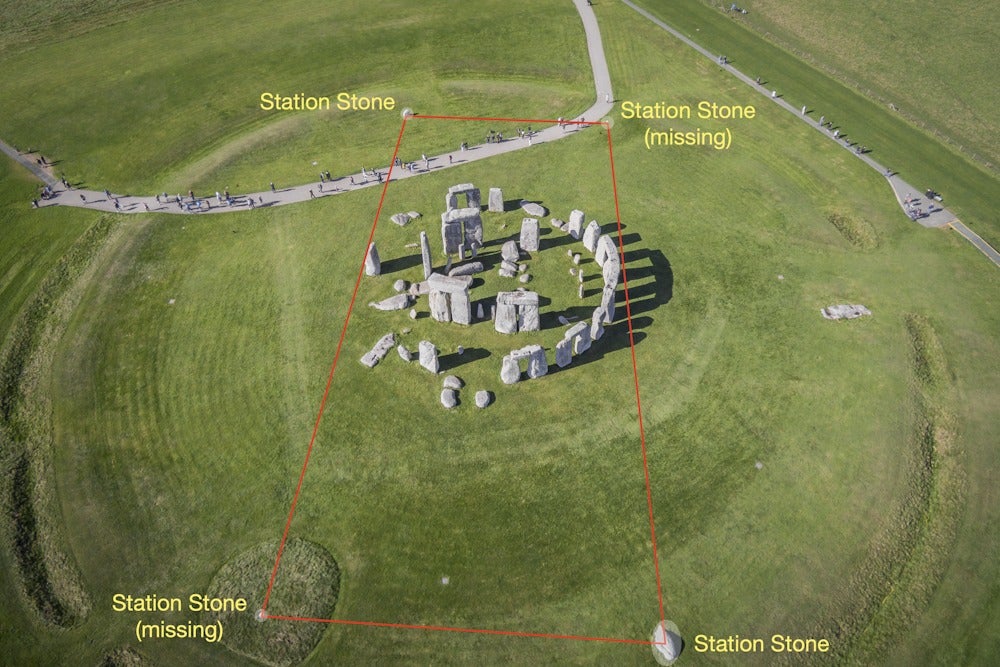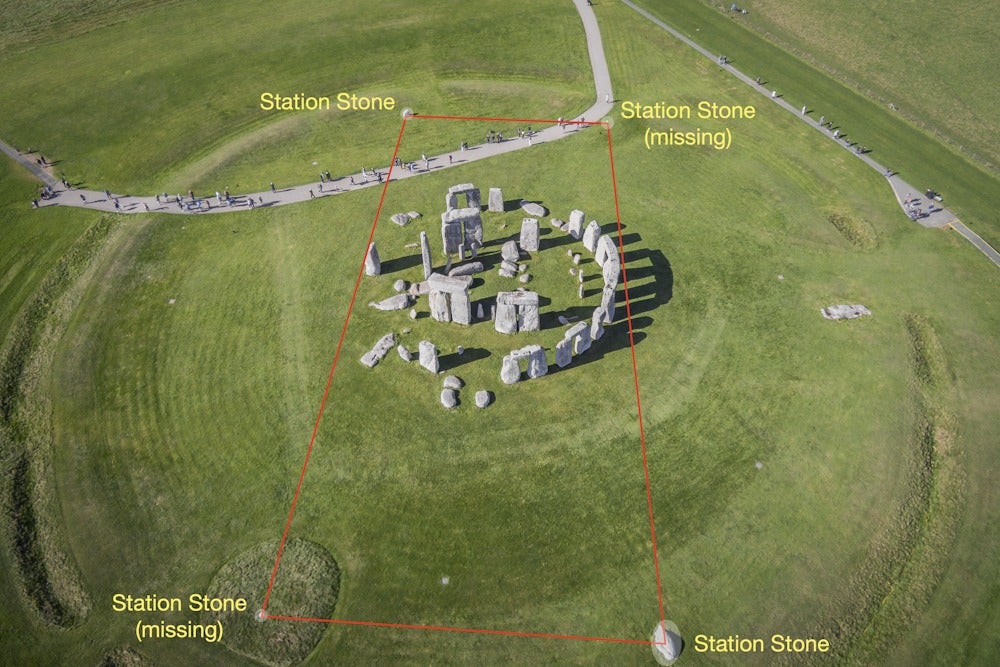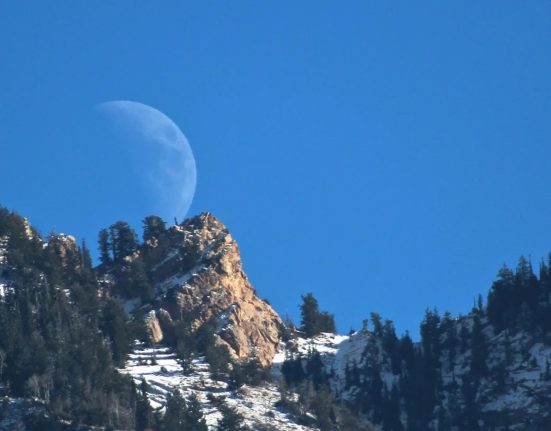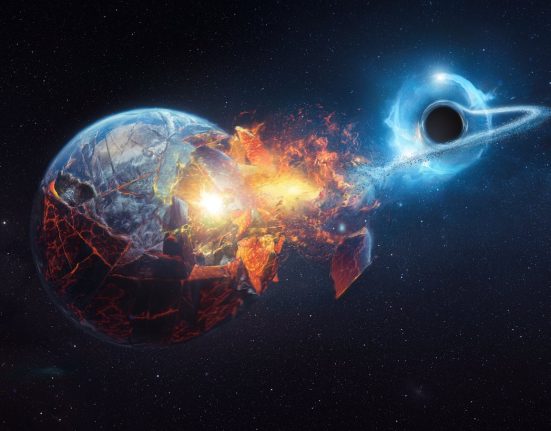
Only two of the station stones remain. Credit: Drone Explorer/Shutterstock.
When it comes to your connection to heaven, Stonehenge is better known by their solar alignments. Every summer night tens of thousands from the people meet at Stonehenge to celebrate and witness the rising Sun aligned with the Heel stone outside the circle. Six months later, a smaller crowd gathers around the Heel Stone to witness the midwinter sunset within the stone circle.
But a hypothesis It has been around For 60 years now, part of Stonehenge has also been aligned with moonrise and moonset in what is called a major lunar stop. Although a correlation between the arrangement of certain stones and the great lunar stop has been known for several decades, no one has systematically observed or recorded the phenomenon at Stonehenge.
This is what we aim to do in a project that brings together archaeologists, astronomers and photographers from English Heritage, Oxford, Leicester and Bournemouth universities, as well as the Royal Astronomical Society.
Now there is an abundance of archaeological evidence This indicates that solar alignment was part of the architectural design of Stonehenge. Around 2500 BC, the people who built the big stones and dug an avenue in the chalk seemed to want to cement the axis of the solstice in Stonehenge architecture.
Archaeological evidence from the nearby walls of Durrington, the place where scientists believe the ancients who visited Stonehenge stayed, indicates that of the two solstices it was the one of midwinter which attracted the largest crowd.
But Stonehenge includes other elements, such as 56 wells arranged in a circle, an earthen bank and a ditch, and other smaller elements, such as the four station stones. These are four sarsen stones, a form of silicified sandstone common in Wiltshire, which were carefully placed to form an almost exact rectangle encompassing the circle of stones.
Only two of these stones are still there, and they pale in comparison to their larger counterparts, being only a few feet tall. So what could be its purpose?

lunar stop
The rectangle they form is not just any rectangle. The shorter sides are parallel to the main axis of the stone circle and this may be a clue to its purpose. The longest sides of the rectangle border the outside of the stone circle.
It is these longer sides that are believed to align with the main lunar stop. If you were to plot the moon's rising (or setting) position over the course of a month, you would see that it moves between two points on the horizon. These southern and northern limits of moonrise (or set) of the moon change in a cycle of 18.6 years between a minimum and maximum range: the so-called minor and major lunar stops, respectively.
He great lunar stop It is a period of about a year and a half to two years in which the northernmost and southernmost moon rises (or sets) are farthest apart. When this happens, the Moon rises (and sets) outside the range of rising and setting, which may have imbued this celestial phenomenon with meaning and significance.

The strongest evidence we have of people marking the largest lunar stoppage comes from the southwestern US. Chimney Rock Great Housea multi-level complex built by the ancient Pueblo people in the San Juan National Forest, Colorado, more than 1,000 years ago.
It lies on a ridge that ends in a natural formation of twin rock pillars, an area that has cultural relevance to more than 26 Native American tribal nations. From the point of view of the Great House, the Sun will never rise through the space between the pillars.
However, during a great stagnation The Moon rises between them in an impressive way. Excavations unearthed preserved wood, allowing researchers to date episodes from the year the Great House was built.
Of six court dates, four correspond to years of important lunar stoppage between the years 1018 and 1093 AD. C., indicating that the site was renovated, maintained or expanded in consecutive major stops.
Returning to the south of England, archaeologists believe there is a connection between the main lunar stop and the first phase of construction of Stonehenge (3000-2500 BC), before the sarsen stones were brought.
several sets of cremated human remains from this phase of construction were found in the southeastern part of the monument in the general direction of the southernmost main moonrise, where three wooden posts were also placed on the bench. It is possible that there was an early connection between the Stonehenge site and the Moon, which was later emphasized when the station's stone rectangle was built.
However, the great lunar strike hypothesis raises more questions than it answers. We do not know if the lunar alignments on the station stones were symbolic or if people were supposed to observe the Moon through them. We also don't know which phases of the Moon would be most spectacular to witness.
A search for answers
In our next work, we will try to answer the questions raised by the great lunar standstill hypothesis. It is unclear whether the Moon would have been strong enough to cast shadows and how they would have interacted with the other stones. We will also need to check if the alignments can still be seen today or if they are blocked by forests, traffic and other features.
The Moon will align with the station stone rectangle twice a month from approximately February 2024 to November 2025, giving us plenty of opportunities to observe this phenomenon in different seasons and phases of the Moon.
To bring our research to life, english heritage will livestream the southernmost moonrise in June 2024 and host a series of events throughout the year, including talks, a pop-up planetarium, stargazing and storytelling sessions.
Across the Atlantic, our partners at the US Forest Service are developing educational materials on great lunar stop at Chimney Rock National Monument. This collaboration will result in events showcasing and discussing the lunar alignments at both Stonehenge and Chimney Rock.
This article was first published in The Conversation. It is republished here under a Creative Commons license.












Leave feedback about this